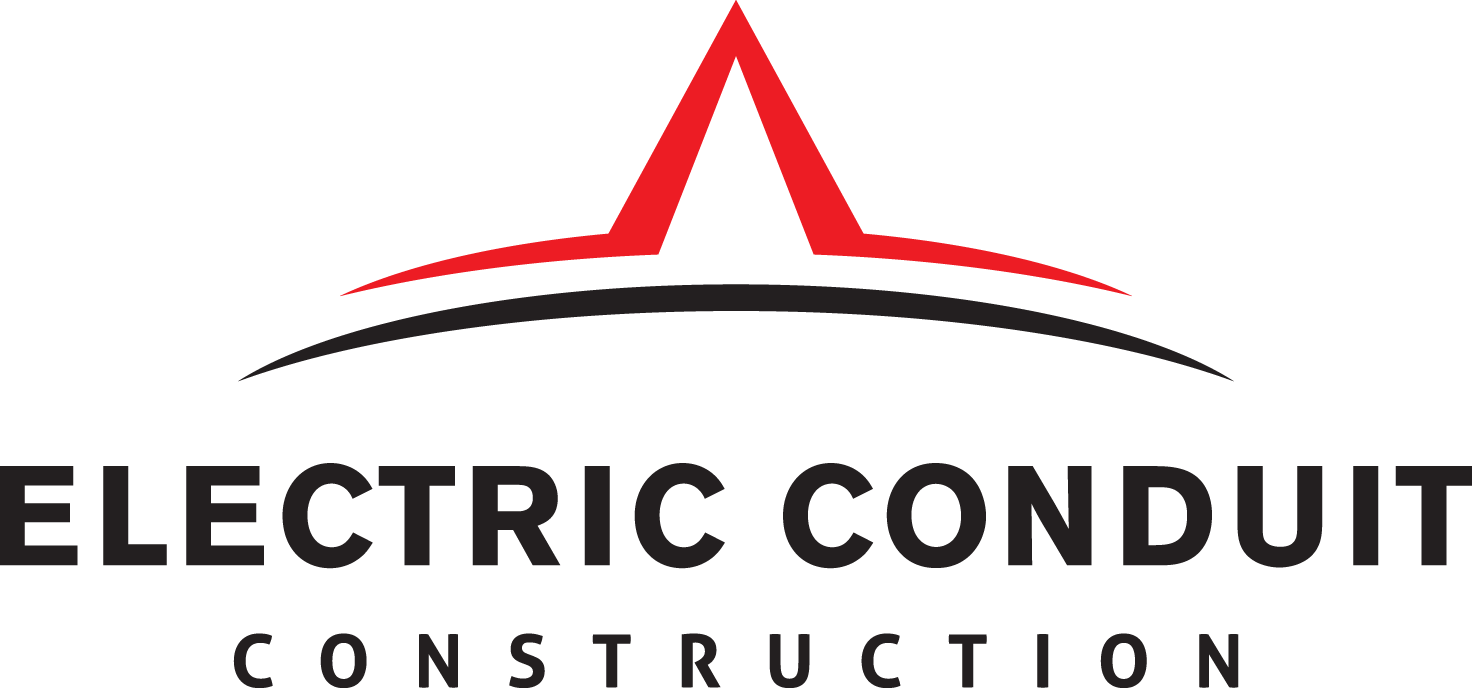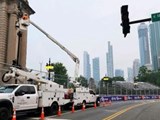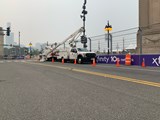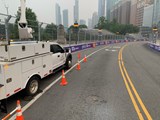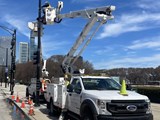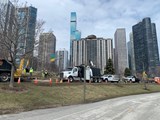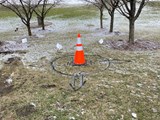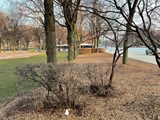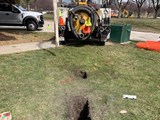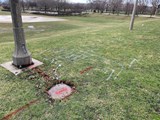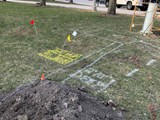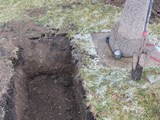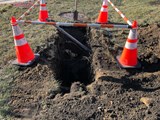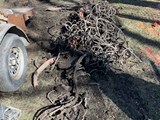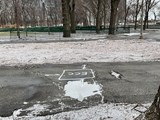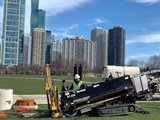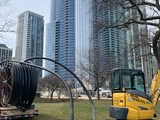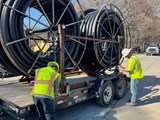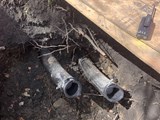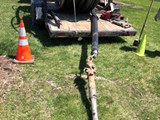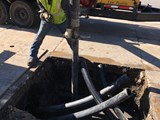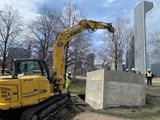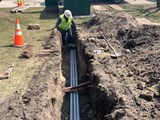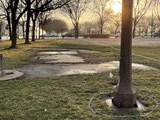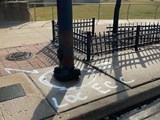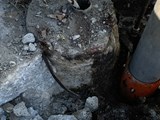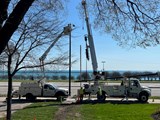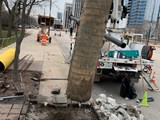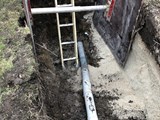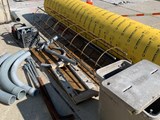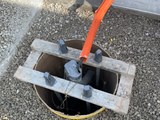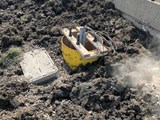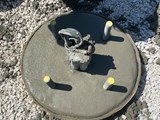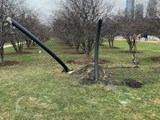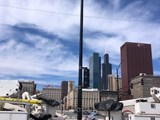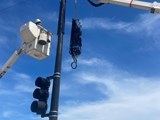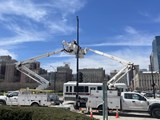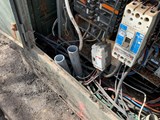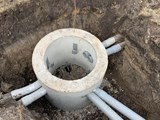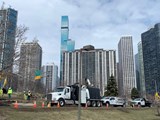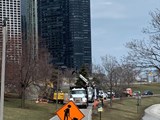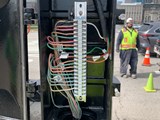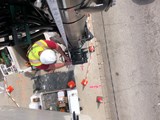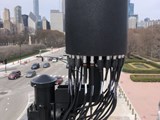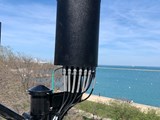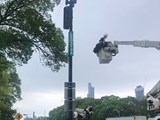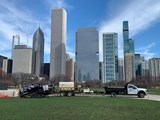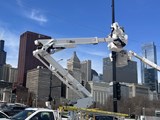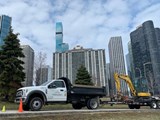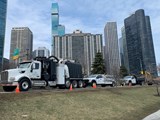5G Races to Beat NASCAR in Chicago
Overview
The City of Chicago and NASCAR have set up a 2.2-mile (11,616 ft.), 12 turn, twisting racetrack on the lakeshore and through parts of downtown. This will be an exciting race that is expected to draw over 100,000 fans. Each one will have a cell phone and will want to instantly send photos, videos, and text messages. Mobile phone carriers do not want their customers to experience delays in data transmission and to that end have awarded Electric Conduit Construction (ECC) the task of increasing reception and data transmission capacity ahead of this singular event. The challenge on this project was to drill and place over 24,000 ft. of conduit, fiber, and power. The equivalent of over 2 laps and make it all work.
5G service is the best option for fast data transfer, but it requires a fiber optic connection to reduce latency and provide the user with high-speed upload and downloads. On this project, there was only one point of access for a new fiber feed. This required additional directional drilling to bring the fiber to each of the eight nodes and 32 small cell sites that were to be built. Unlike race cars moving at over 100 miles per hour on smooth pavement, a directional drill’s speed is measured in inches per minute.
Locates - Underground & HDD
The city of Chicago uses distinct types of streetlamp posts. In parkland areas the old cast concrete with exposed aggregate style is typical. In other areas along boulevards the sleeker fluted steel type is found. When adding radios, antennae and network interface boxes to these structures each lamp post had to be replaced with the same type, but built to carry greater loads and withstand higher wind loading.
Removing a lamp post is only half of the project. The entire foundation must be removed while preserving the electrical connections for the light. Typically, a new sono-tube is placed, reinforced, and then poured. The new lamppost can then be anchored and wired. Directional drilling brings fiber and additional power to the site. A small amount of open cut work is usually required to complete the circuit and establish a handhole to store slack fiber in the event of a break.
Street lamp posts - Fiber Optic Cable - Power
Project Notes:
- 24,306’ HDD in 1,000’ to 1,500’ shots
- Maximum pull force 1,500 psi
- 160’ of trench, (open cut).
- 11 handholes
- 1,000’ inner duct placed manhole to manhole
- 8 nodes
- 32 small cell sites
- RF testing
- Fiber optic placement, splicing, testing and termination
Speed to market - Safety
ECC crews only had two and a half months to complete all nodes, all small cell sites and run fiber and power to each one. At times up to five crews were working in coordination to extend conduits via directional drilling, dig in hand holes, pothole to identify all foreign utilities, and pull, terminate, and test fiber.
ECC’s Utility Damage Prevention Plan guides drilling crews in the procedures to follow to avoid striking known utilities. ECC’s experienced drilling crews also know how to identify potentially unmarked utilities. Combined, these efforts pay big dividends in productivity and safety of our crews. Drilling around underground power lines can be very hazardous and every precaution is taken to electrically isolate the operator from the machine.
This job was challenging due to the short period of time given to build the underground and overhead structures. This alone could have precipitated an accident or incident. ECC prides itself on meeting the terms of every project contract. This one is no different and ECC is proud to move fast to get the project done, just like NASCAR.
